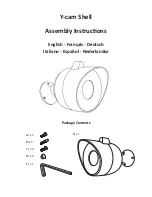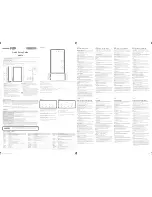
18
19
Solar Imaging
Warning: Always use a full
aperture Solar Filter when
observing the Sun.
With a properly fitting full-aper-
ture solar filter attached to your
telescope, you can use the
SAG-
PRO to take images of the Sun
and the sunspots on its surface.
(Filters available through Orion.
Check the catalog or OrionTe-
lescopes.com for more informa-
tion).
Solar imaging, like Planetary
and Lunar imaging requires fast
frame rates and exposure times.
The
SAGPRO also functions well
using dedicated solar telescopes
such as the Coronado PST.
Download the Orion AstroCap
software guide for more infor-
mation on how to use your
SAGPRO for Solar Imaging.
Deep Space Imaging
Long exposures of up to 10 minutes give the user the ability to capture
Galaxies, Clusters, Nebulas, Comets and even asteroids.
Note: Long exposures will require a tracking mount with decent
polar alignment. For best results a guide camera should also be
used.
Download the
Orion AstroCap software guide for more information
on how to use your
SAG PRO for Deep Space Imaging.
Tips
Choosing a Site for Astro-imaging
Once you have a focused image, you may find your image shifting and
washed out. This can be caused by many environmental factors. Poor
seeing (movement of molecules in the air, such as heat rising) and poor
transparency (moisture, smoke, or other sky contaminants) will all serve
to reduce image quality. That is why most major astronomical telescopes
are on high mountains in thin air, to get above much of the seeing and
transparency problems. Also, wind will move your telescope and affect
images. Your eyes viewing through an eyepiece can change slightly to
compensate for disturbances like these, but the camera cannot. Keep
these factors in mind when choosing an observing site for astronomical
imaging.
For the best astro-images, we recommend finding a location with dry air,
some altitude, and away from city or streetlights. Even a nearby hilltop in
the countryside can provide better viewing conditions than many conve-
nient backyard locations.
Figure 7.
Deep Space Imaging.
Figure 8.
SAGPRO Camera dimensions.
Figure 6.
Solar imaging using a
Coronado PST.






























